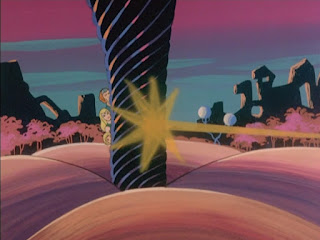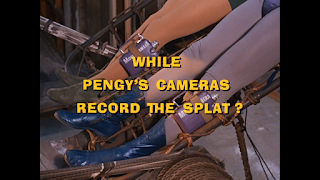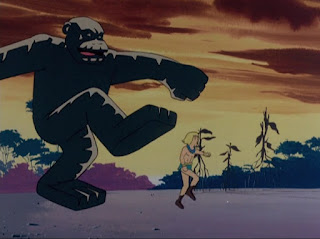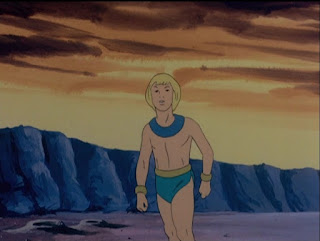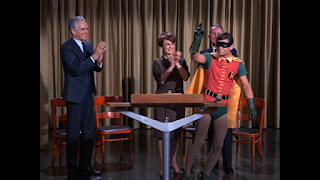Dorno is the son of Zandor, leader of the Herculoids, and his wife Tara, a family of three humans and their five very powerful pet creatures defending their jungle planet. The Herculoids were the subjects of an American animated television series, which debuted in 1967 and was revived in 1981 on CBS and produced by Hanna-Barbera Productions.
Dorno has a cute, boyish face, long, blond hair, and a slender, athletic physique. His shirtless Herculoids outfit consists of a pair of brown boots, a light, blue skirt and neck collar, and a gold belt and wrist bands. At his age, he is growing taller and more attractive and gaining better muscle definition and athletic ability. He is also developing more self-esteem and self-confidence and taking more risks.
Due to his youth and his lack of special powers, Dorno is certainly one of the most vulnerable members of the Herculoids and is frequently a weak link which their opponents seek to target.
In this episode, desert dwellers revive a powerful witch which captures their minds. The desert dwellers attack the Herculoids and force them to retreat. Helped by Space Ghost and his friend, the Heculoids recover their home. Space Ghost manages to steal the witch's book, but, after turning it over to Jan and Jace, the witch captures his mind. From the book, Tara finds that the witch needs to revive herself every day and plans an ambush for her.
Action shots:
Previous blog:


